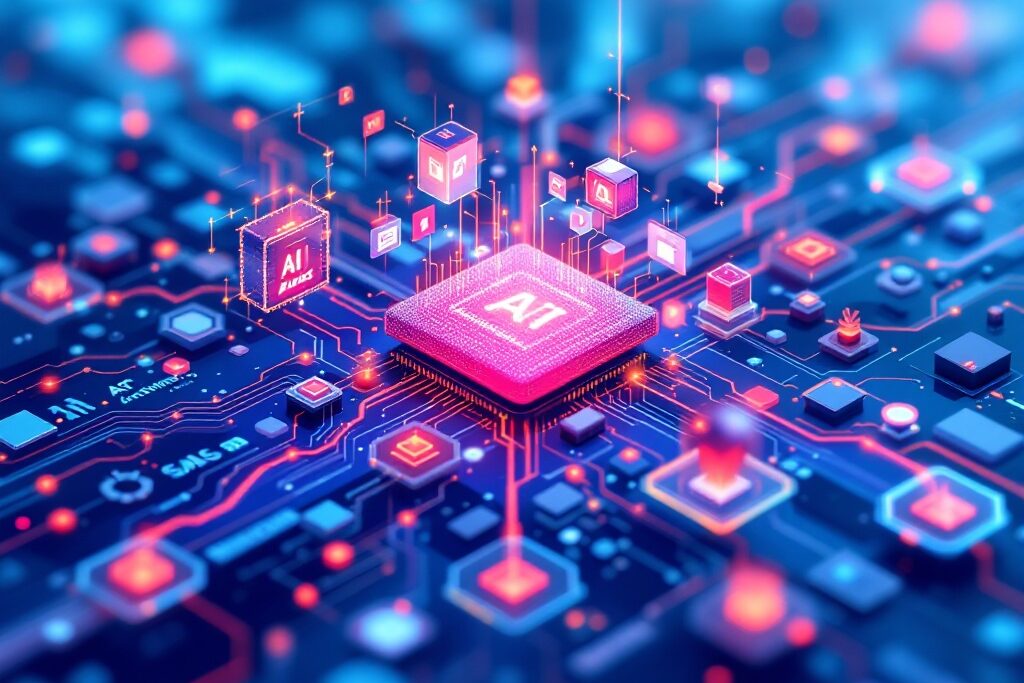The idea that “SaaS is being dismantled” by artificial intelligence (AI) has gained traction in recent conversations about the future of software. It’s a bold thesis, suggesting that AI advancements are fundamentally reshaping, if not outright replacing, the traditional Software-as-a-Service (SaaS) model. As someone deeply involved in AI integration and digital transformation projects, I find this argument both fascinating and polarizing. While the thesis raises valid points, it also oversimplifies and underestimates certain key aspects of SaaS. Let’s explore the strengths, weaknesses, and a more balanced perspective on this evolving narrative.

Strengths of the “SaaS is Being Dismantled” Argument
To begin with, the argument has its merits and highlights some undeniable trends shaping the industry:
- Logical Evolution Path: The proposed three-phase progression—co-pilot (AI assisting users), autonomous agent (AI independently executing tasks), and invisible software (AI seamlessly integrated into workflows)—is a compelling framework. It aligns with the trajectory we’re seeing in business applications, where tools like ChatGPT are moving from helpers to actual decision-makers.
- Unbundling Expertise: SaaS platforms often package expertise into their products, such as analytics dashboards or CRM workflows. AI has the potential to unbundle these capabilities, offering direct solutions without the need for dedicated software. For example, AI tools can now perform advanced customer segmentation without requiring a full CRM platform.
- Insight into Metrics: The thesis points out a fascinating trend where daily active users (DAUs) remain strong, but feature-level usage declines. This observation underscores how users are gravitating toward simpler, more intelligent solutions that achieve results with less friction.
- Democratized Creation: AI is enabling democratized software development, where users can create bespoke solutions without needing extensive coding skills. Low-code and no-code platforms powered by AI are already making this vision a reality.
These strengths highlight why the thesis resonates with those who view AI as the next major disruptor in the software world.
Weaknesses and Counterpoints
Despite its appeal, the thesis overlooks several critical factors that challenge the idea of a complete dismantling of SaaS:
- Overestimating AI Agent Capabilities: While AI agents are improving, they still struggle with complex, multi-step tasks requiring contextual understanding. Fully autonomous AI replacing SaaS feels premature; human intervention remains essential for most sophisticated workflows.
- Underestimating SaaS Adaptability: Major SaaS players like Salesforce, Microsoft, and Adobe are not sitting idle. They are integrating AI into their ecosystems and leveraging massive proprietary datasets to stay competitive. For instance, Salesforce’s Einstein AI and Adobe’s Sensei are clear examples of SaaS platforms evolving, not being replaced.
- Value Beyond Interfaces: SaaS platforms offer more than just user interfaces. They provide critical services like data security, compliance, scalability, and integrations. These foundational elements are not easily replicated by standalone AI tools.
- Network Effects: Many SaaS products derive significant value from their network effects. For example, Slack and Salesforce thrive because they connect entire organizations and ecosystems, something AI agents cannot easily replicate.
- Complexity of Custom Solutions: The idea that bespoke solutions can be built “in days” underestimates the complexities of deployment, maintenance, and reliability. Even with AI, ensuring security and long-term functionality is no small feat.
These points suggest that while AI is transformative, SaaS remains resilient and adaptable, with strengths that AI alone cannot overcome.
A More Nuanced Perspective
Rather than a dismantling, what we’re likely to see is a transformation and consolidation of SaaS. Here’s how I envision this unfolding:
- SaaS Companies Pivoting to AI Platforms: Many SaaS providers will evolve to become AI-first platforms, integrating intelligent features at their core. For example, HubSpot’s AI tools now enhance its CRM features, making the platform more valuable, not less.
- Emergence of Hybrid Categories: New SaaS categories will emerge at the intersection of AI and traditional software, blending the best of both worlds. Think AI-powered analytics platforms or marketing tools that combine automation with predictive insights.
- Pressure on Undifferentiated SaaS: Mid-market SaaS providers with generic features will face increasing pressure to innovate or risk obsolescence.
- Survival of Specialized SaaS: SaaS platforms that embed AI into their core value proposition and focus on niche or industry-specific needs will thrive. For example, platforms handling complex collaboration or specialized regulatory requirements will remain indispensable.
This nuanced perspective acknowledges both the disruptive potential of AI and the adaptability of SaaS, suggesting a future shaped by evolution rather than eradication.
Conclusion
The idea that “SaaS is being dismantled” by AI is provocative, but it oversimplifies the dynamics at play. AI is undoubtedly a disruptive force, but it’s more likely to transform and enhance SaaS than to dismantle it entirely. SaaS companies that embrace AI as an enabler rather than a threat will not only survive but thrive in this new era.
What’s your take on how AI is shaping the future of SaaS? If you’d like to discuss this further or explore strategies for integrating AI into your business, feel free to contact me—I’d love to share insights and collaborate on innovative ideas.




